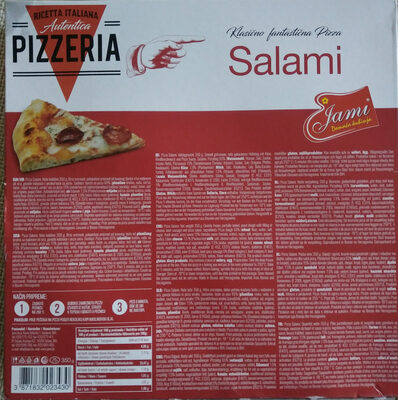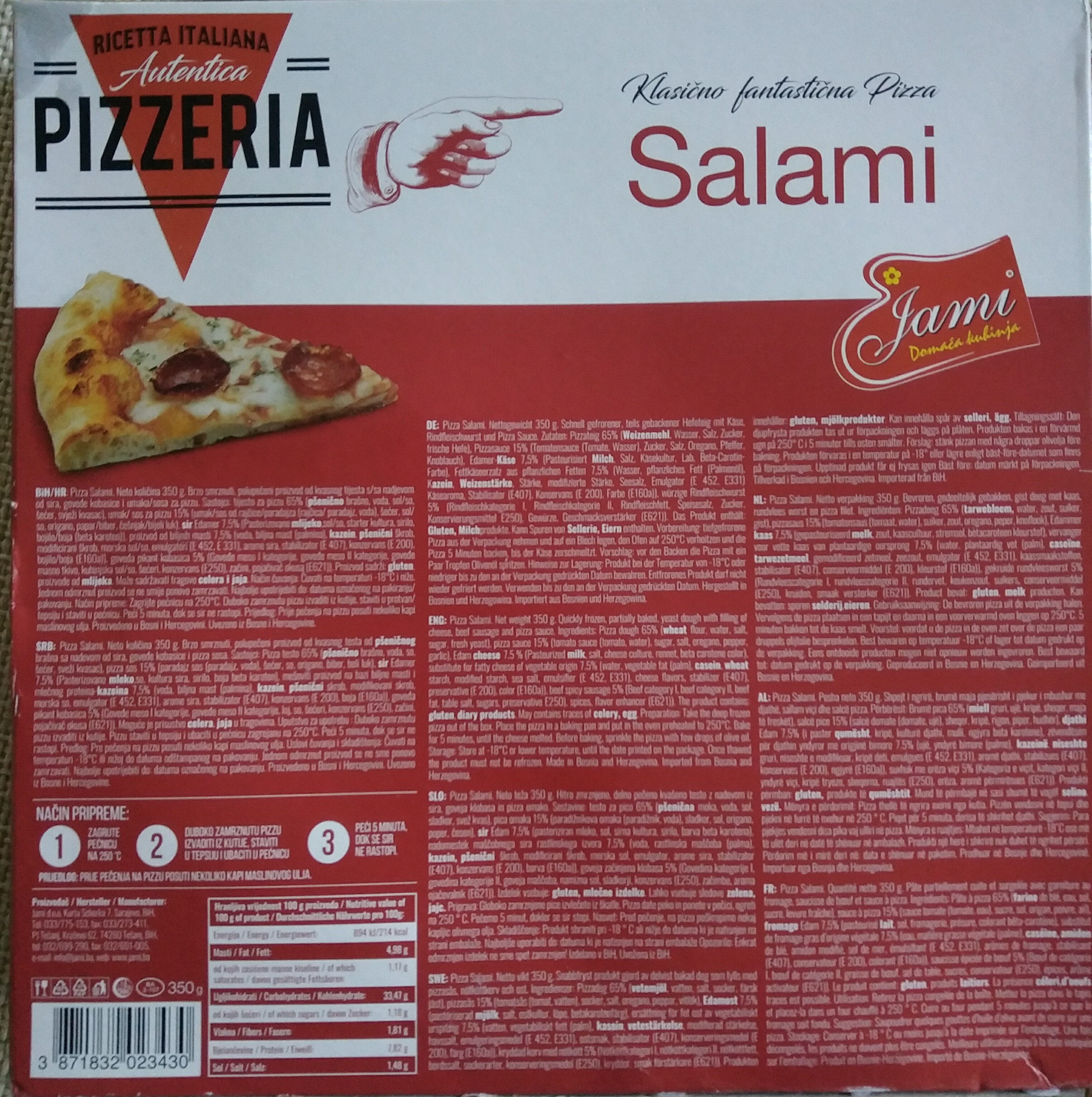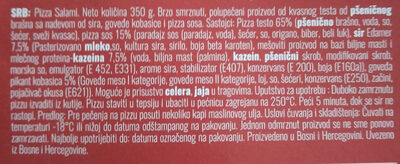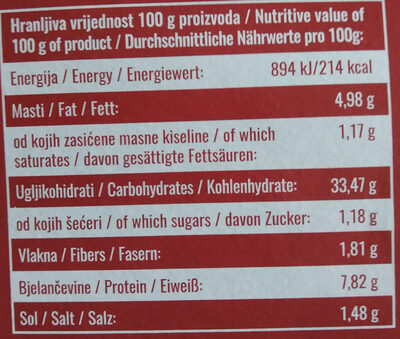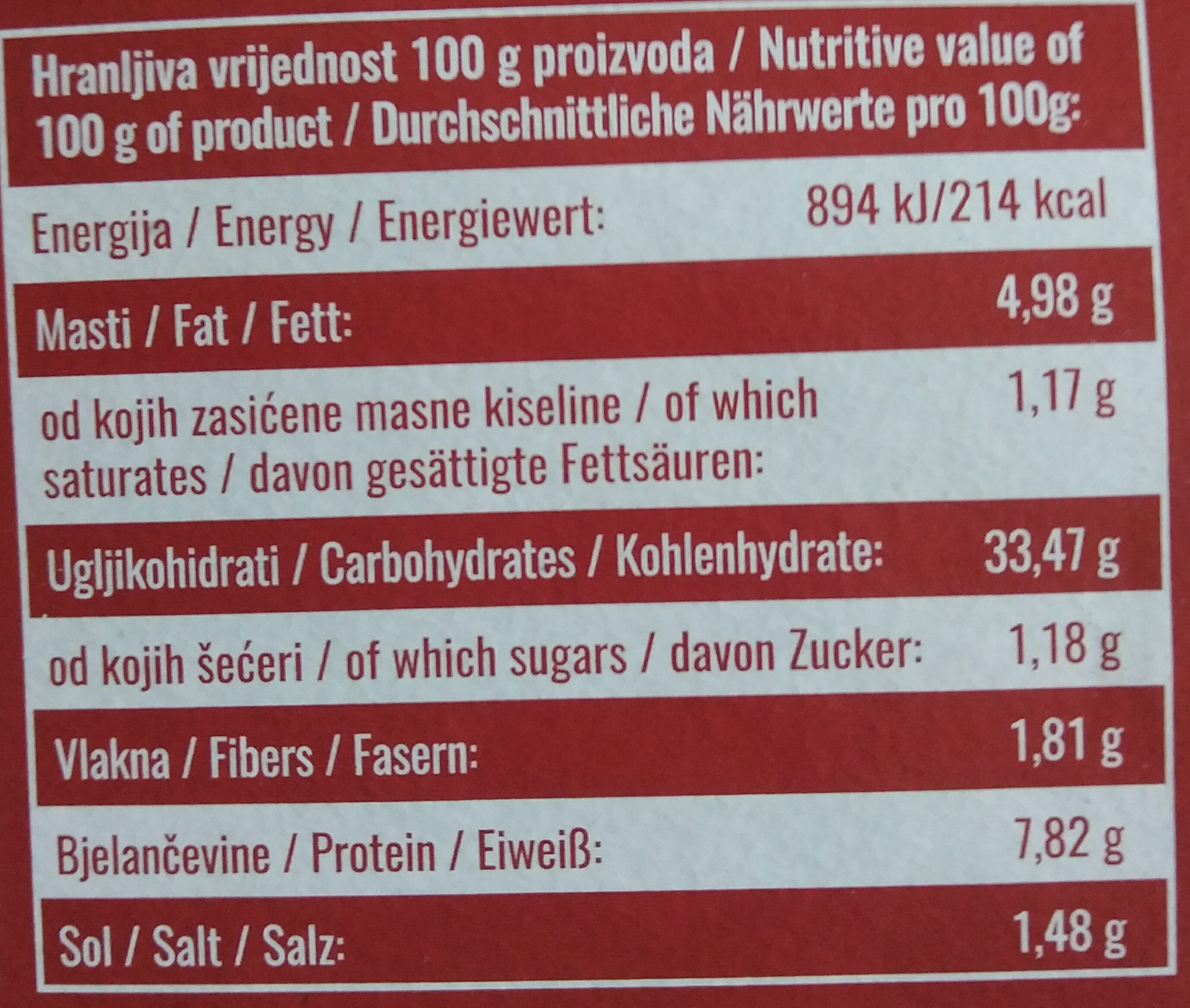Pizza - Jami Domaća kuhinja - 350 g
This product page is not complete. You can help to complete it by editing it and adding more data from the photos we have, or by taking more photos using the app for Android or iPhone/iPad. Thank you!
×
Barcode: 3871832023430 (EAN / EAN-13)
Quantity: 350 g
Packaging: sr:Папир
Brands: Jami Domaća kuhinja
Categories: Meals, Pizzas pies and quiches, Pizzas
Origin of ingredients: Bosnia and Herzegovina
Manufacturing or processing places: Сарајево, Босна и Херцеговина
Stores: Лидл
Countries where sold: Serbia
Matching with your preferences
Environment
Packaging
Transportation
Report a problem
Data sources
Product added on by openfoodfacts-contributors
Last edit of product page on by .
Product page also edited by off.9d8ef6e2-a3bc-45f7-81c2-ab9062bb6113.
If the data is incomplete or incorrect, you can complete or correct it by editing this page.
